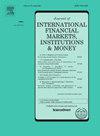Macroprudential policy and corporate loans: evidence from the syndicated loan market
IF 6.1
2区 经济学
Q1 BUSINESS, FINANCE
Journal of International Financial Markets Institutions & Money
Pub Date : 2025-09-17
DOI:10.1016/j.intfin.2025.102223
引用次数: 0
Abstract
We examine how macroprudential policy influences the structure of syndicated corporate loan contracts. Using a dataset of 4,853 European syndicated loans matched with detailed macroprudential policy indicators across nineteen EU countries, we study the impact of regulatory stance on loan amount, maturity, collateral and covenant use. Stricter macroprudential policy is associated with larger loans and a higher probability of collateralization, while macroprudential loosening reduces loan size. These adjustments occur along the intensive margin rather than through outright credit rationing and are concentrated among medium-sized loans and long-maturity facilities. We also show that borrower and lender characteristics mediate the response: larger, more leveraged firms and well-capitalized arranging banks are the primary drivers of the increase in loan size and collateral use. Our findings reveal a novel micro-level transmission channel of macroprudential policy and indicate that regulatory tightening reallocates credit toward safer contracts rather than suppressing overall lending.
宏观审慎政策与企业贷款:来自银团贷款市场的证据
我们研究宏观审慎政策如何影响银团企业贷款合同的结构。我们使用与19个欧盟国家的详细宏观审慎政策指标相匹配的4,853个欧洲银团贷款数据集,研究了监管立场对贷款金额、期限、抵押品和契约使用的影响。严格的宏观审慎政策与更大的贷款和更高的抵押可能性相关,而宏观审慎政策的放松则降低了贷款规模。这些调整是沿着密集的保证金进行的,而不是通过直接的信贷配给,并集中在中型贷款和长期贷款中。我们还表明,借款人和贷款人的特征调解了这一反应:规模更大、杠杆率更高的公司和资本充足的安排银行是贷款规模和抵押品使用增加的主要驱动因素。我们的研究结果揭示了宏观审慎政策的一个新的微观层面传导渠道,并表明监管收紧将信贷重新分配给更安全的合同,而不是抑制总体贷款。
本文章由计算机程序翻译,如有差异,请以英文原文为准。
求助全文
约1分钟内获得全文
求助全文
来源期刊
CiteScore
6.60
自引率
10.00%
发文量
142
期刊介绍:
International trade, financing and investments, and the related cash and credit transactions, have grown at an extremely rapid pace in recent years. The international monetary system has continued to evolve to accommodate the need for foreign-currency denominated transactions and in the process has provided opportunities for its ongoing observation and study. The purpose of the Journal of International Financial Markets, Institutions & Money is to publish rigorous, original articles dealing with the international aspects of financial markets, institutions and money. Theoretical/conceptual and empirical papers providing meaningful insights into the subject areas will be considered. The following topic areas, although not exhaustive, are representative of the coverage in this Journal. • International financial markets • International securities markets • Foreign exchange markets • Eurocurrency markets • International syndications • Term structures of Eurocurrency rates • Determination of exchange rates • Information, speculation and parity • Forward rates and swaps • International payment mechanisms • International commercial banking; • International investment banking • Central bank intervention • International monetary systems • Balance of payments.

 求助内容:
求助内容: 应助结果提醒方式:
应助结果提醒方式:


